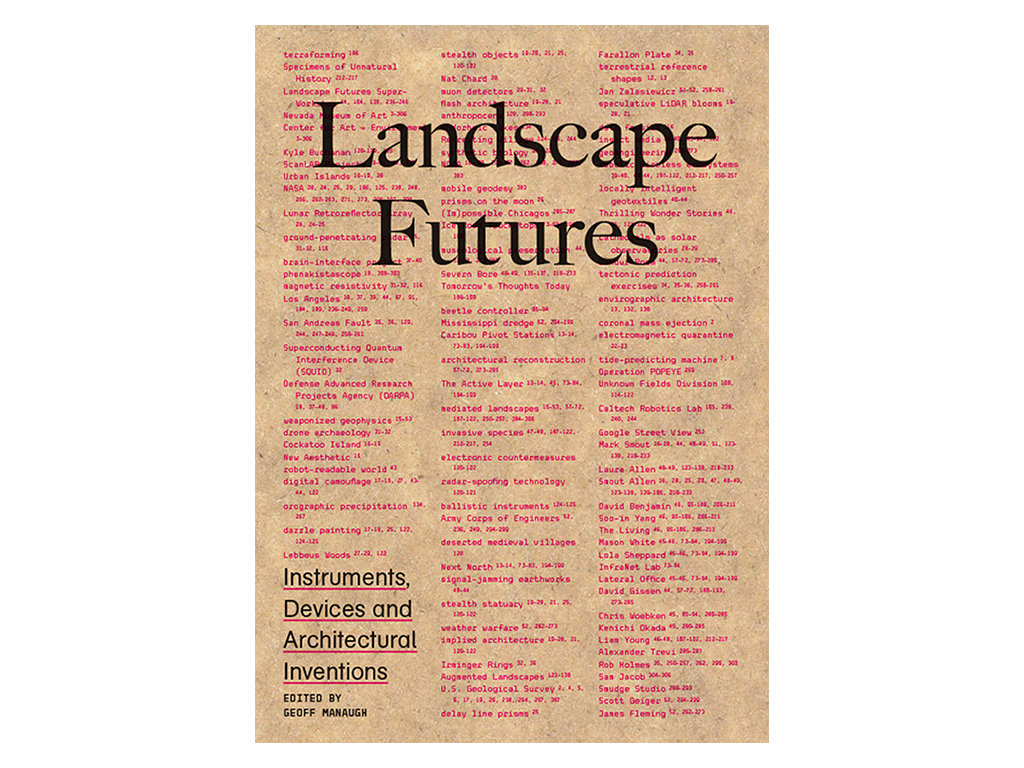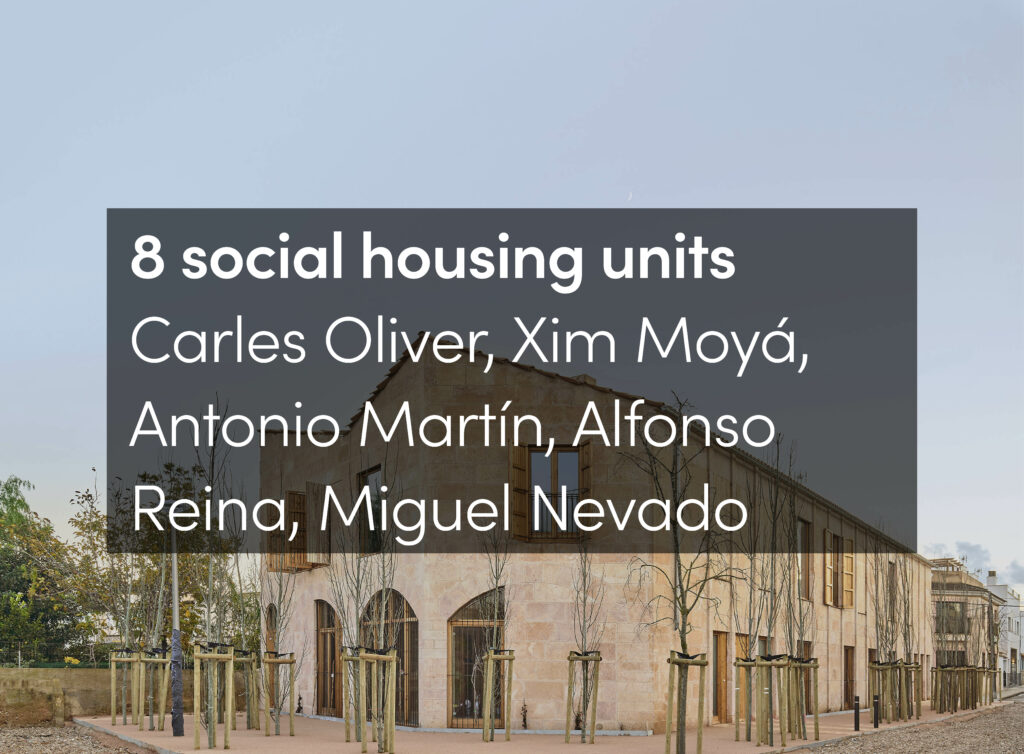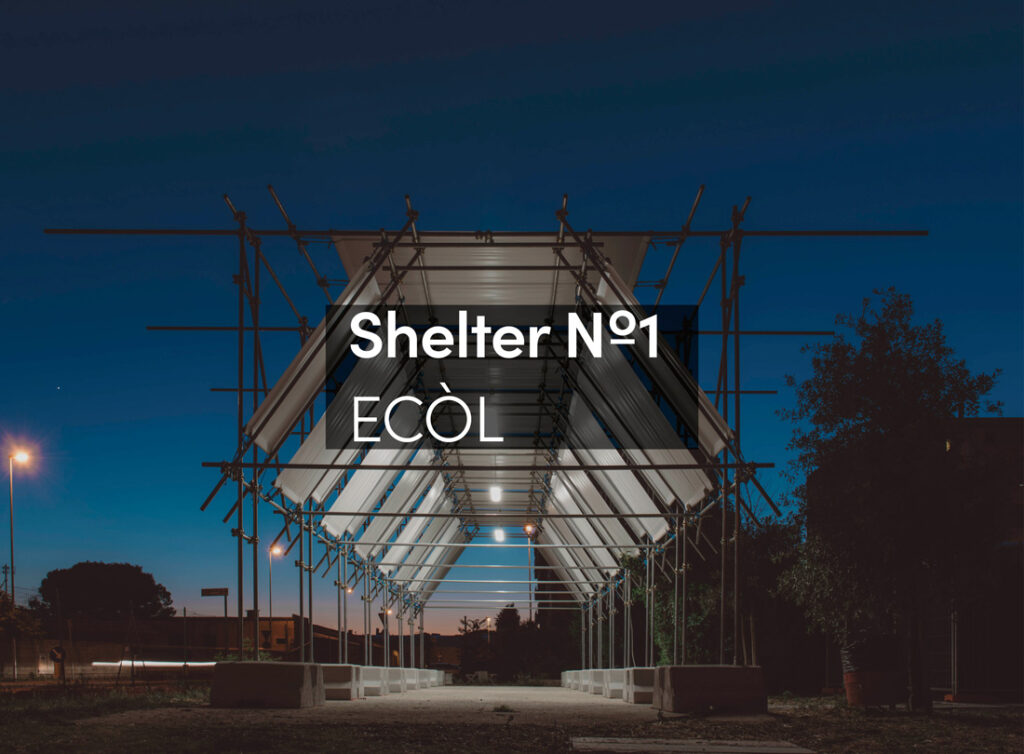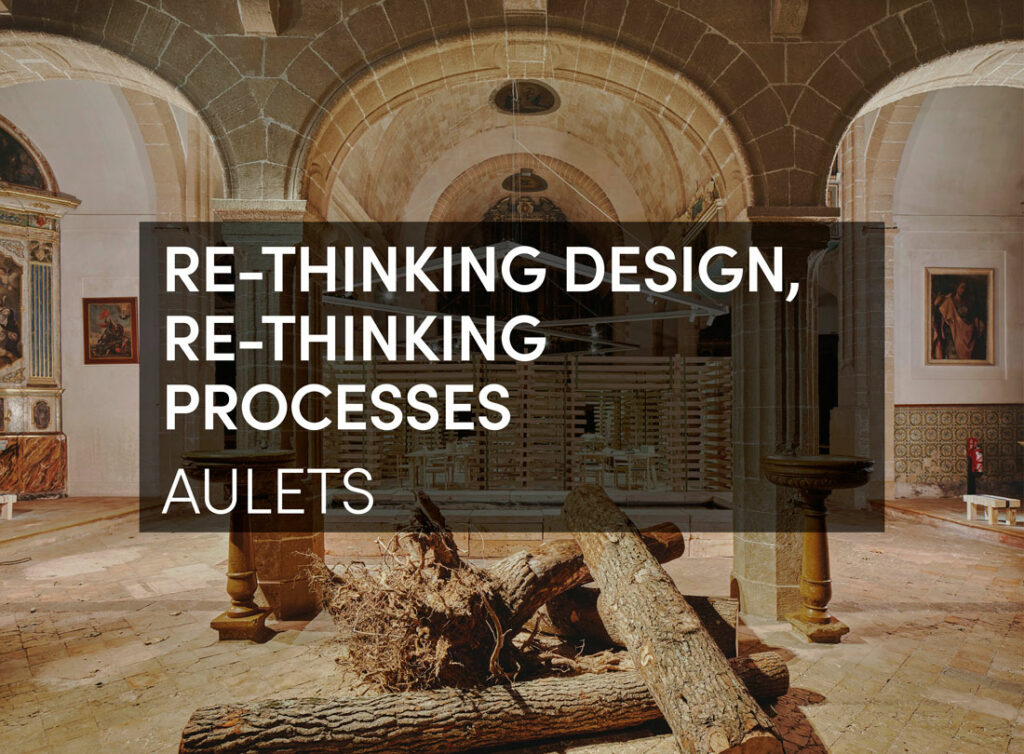Entropy is Not Simply Time’s ArrowThe implications of non-equilibrium thermodynamics challenge nearly all extant assumptions about the energetics of architecture; especially for the design of constitutively nonisolated systems such as bodies, buildings, and urbanization. The salient concepts and dynamics of these systems—acknowledged in this book through various, seemingly contradictory ways by Ludwig Boltzmann, Alfred Lotka, Erwin Schrödinger, Howard T. Odum, and Adrian Bejan amongst many others—stand to transform the pedagogies and practices of architecture. Yet these relevant concepts and dynamics remain unfamiliar to architects. As a model, these observations about nonequilibrium systems afford epistemological advantage over equilibrium counterparts. What is at stake, though, is much greater than simply a more valid scientific basis for the energetic operations of architecture. These concepts instead pose a larger intellectual transformation regarding the models of causality that architects wittingly, or unwittingly, employ to reason and imagine architecture: our model of models.
Over the course of the past century, several reflections emerged regarding non-equilibrium systems and the associated dynamics of entropy, dissipative structures, and ‘maximum power’. For instance, the observation that entropy increases towards a homogenous state of maximum unavailability is all but a colloquialism of any high school physics course. This articulation of the Second Law is of course valid, but only pertains to isolated thermodynamic systems. Buildings and are urbanization, to be certain, are always and only nonisolated thermodynamic systems. For non-isolated systems—wherein systems and surroundings are coupled in nonlinear ways far from equilibrium—the Second Law has surprising, often counter-intuitive implications for design.
These implications of the Second Law strain against the prevailing assumptions energy in architecture based on isolated, equilibrium-oriented systems: unquestioned, formulaic dogmas such as energy conservation and energy efficiency. The scientific basis of these tautologies is difficult to discern in the nonisolated context of buildings and urbanization. While efficiency might be a reasonable concern in an isolated system, the efficacy of efficiency is dubious in nonisolated systems. Regarding efficiency, there is only one efficiency that matters in nonisolated systems, as Howard T. Odum and Richard C. Pinkerton stated: “systems perform at an optimum efficiency for maximum power output, which is always less than the maximum efficiency.” [1] Or as systems ecologist James Kay states it, “focusing only on efficiency will lead to designs that use more exergy and produce more waste than they need to.” [2] In short, take care of power and any necessary efficiencies will take care of themselves.
So, rather than these common but misleading dogmas, nonisolated-nonequilibrium thought instead discerned a recurrent countertendency in energy systems: the movement of systems towards an increase in power through maximal intake, transformation and feedback of energy and matter. “In every instance considered,” Alfred Lotka observed, “natural selection will so operate as to increase the total mass of the organic system, to increase the rate of circulation of matter through the system, and to increase the total energy flux through the system, so long as there is presented an unutilized residue of matter and available energy.” [3] Given that humans use a small portion (16.5 terrawatts of exergy of the available 165,000 terrawatts of insolation), available energy gradients grant abundant residue. [4] George Bataille, for one, reflected on this surplus and understood one must accordingly not only grasp our dynamics in a general rather restrictive economy, but that this surplus has important implications for our dynamics. He notes, “on the surface of the globe, for living matter in general, energy is always in excess; the question is always posed in terms of extravagance. The choice is limited to how the wealth is to be squandered.” [5] In Bataille’s words, this accursed share “must necessarily be lost without profit; it must be spent, willingly or not, gloriously or catastrophically.” This transforms the otherwise Calvinist disposition of energy considerations and puts the necessary excess of architecture to work in ways heretofore unimagined by designers.
Bataille’s instance on optimal penury is at the core of the Second Law of thermodynamics, which is a law of transformation and dissipation. Given this surplus, the question of energy is a struggle for efficacious—not efficient— transformation and dissipation of available energy gradients. “The general struggle for existence of animate beings is,” Boltzmann noted in his explication of the Second Law, “therefore not a struggle for raw materials—these, for organisms, are air, water and soil, all abundantly available—nor for energy which exists in plenty in any body in the form of heat (albeit unfortunately not transformable), but a struggle for entropy, which becomes available through the transition of energy from the hot sun to the cold earth.”
The production of entropy is inevitable, not to be resisted through discourses on “waste”, a hopelessly isolated system concept. The struggle for entropy, and work, in the dissipation of abundantly available gradients is no simplistic dynamic. It is, in fact, a wildly generative proposition in nonisolated systems. As Timothy Allen writes, “systems running down to disorder is a trivial matter compared with the elaborate things that happen and persist if the system is not allowed to run down.” [6]
The dynamics of our nonisolated systems are a struggle for the production of entropy: a cascade of coupled systems that extract as much work as possible from exergy. Available energy gradients do tend to cancel themselves out, but systems coevolve and couple so as to maximize work, develop structure, and cycle information in the process of that canceling dissipation. Systems do so by developing greater order and organization through mutually advantageous cascades of anergy and exergy exchanges. Mature systems develop in which one system’s entropy is another system’s exergy. Through this coupling across space and time, order emerges from apparent disorder. We can thus abductively discern that systems prevail which extract maximal power from an available energy gradient. These are designs that ultimately extract as much work from available gradients and thus produce maximum entropy at the lowest level possible. [7]
Thus, one unanticipated principle of nonisolated thermodynamic thought is that entropy is not simply time’s arrow.
The nonisolated, nonequilibrium systems of our planet—and in ways entirely consistent with the irreversibility of the Second Law—tend to move, to recurrently meander, towards more complex and powerful gradient dissipation. Time is not a simple linear progression towards equilibrium. It is rather a sport of creative dissipation, alternately moving towards and away from equilibrium through more and less ordered states. They do so not only for specific durations, but on account of the temporary organizations and order that delimit those durations. As ecosystem scientists Eric Schneider and James Kay describe it, “The thermodynamic principle which governs the behavior of systems is that, as they are moved away from equilibrium, they will utilize all avenues available to counter the applied gradients. As the applied gradients increase, so does the system’s ability to oppose further movement from equilibrium.” [8] These designs push systems ever away from equilibrium in nonlinear ways, seemingly in defiance of the linear, gravitational-like tug toward equilibrium of a system considered in isolation. Power and entropy production do tend to increase over time—not towards disorder and a drive toward homogeneity—but through form.
Form & Formation
The universe, you see, abhors an energy gradient. [9] Form emerges to dissipate available gradients and produce entropy in increasingly powerful ways. Form pushes systems away from equilibrium. Ilya Prigogine and Renee Leféver stated that within nonisolated systems “an ordering mechanism not reducible to the equilibrium principle appears. For reasons to be explained later, we shall refer to this principle as order through fluctuations. One has structures which are created by the continuous flow of energy and matter from the outside world. Their maintenance requires a critical distance from equilibrium, i.e. a minimum level of dissipation. For all these reasons we have called them ‘dissipative structures’.” [10] Ordered structures of dissipation emerge to cancel available gradients, but in a particular way and are generally oriented towards maximum power ends.
Whether it is a tree, a tornado, a forest, a body, a building, a city or a civilization, again and again forms appear to dissipate available energy gradients. The energetic basis of powerful form is the dependent, coupled dissipation of energy. In the most general terms, this dependency and structure requires pathways between the sources and sinks, between relative quantities of anergy and exergy, which establish the mutualities of work in coupled systems. The organization of these pathways between sinks and sources is form. The organization of these forms is what Adrian Bejan describes as “design”. [11]
Given the almost alien quality of this central claim—that form emerges to dissipate energy in powerful ways—it will take years, if not decades, to fully comprehend the purpose and latent power of architecture and urbanization. Just imagining formations and dissipations that would push architecture towards maximum power is daunting, to say nothing of designing them, but it is nonetheless an absolute indicator of ecological and thermodynamic relevance.
Thermodynamics or Technocracy?
At the outset, though, it be understood that form is of course not determined by this tendency, but it is dependent on it. At a fundamental level, it is impossible to dissociate cultural and social practices from an energetic basis. As far from acultural and technocratic as from equilibrium, form as an oriented gradient reducer has endless examples in what is generally taken to be the cultural milieu. The scaling laws of cities are well documented examples. But equally, a pyramid, a peripteral temple, a monumental bathing complex, a Gothic cathedral, a skyscraper, or simple houses are all forms that dissipate manifold forms of energy, albeit less conceptualized and documented examples. These buildings are all expenditures, dissipations of matter and energy. To grasp the simultaneity of energetic dissipations across all respective spatial and temporal scales, along with their respective orders of magnitude, is a central task of design and form in architecture. These buildings are not reducible to these energetic orders of magnitude but they are constitutively bound to them.
In energetic and cultural ways, architecture is product of conjugate causalities, with energy as one persistent and immanent cause. Whether it is the illumination of an atrium in a museum, the span of an arch, or heat in a thermal bath, architects both impose order on—and seek order from—the dissipation of matter and energy systems inherent to building. Architects both suggest order as well as amplify the orders suggested by matter/energy in the formation of buildings. Without a sense of this recursive causality, little will be known about the formation and dissipation in architecture.
In this way, thermodynamics provides novel insight on how form and energy otherwise relate through design. If form—its origins, generative processes, and appearances—is arguably the most persist, most central concern in architecture, then the thermodynamic observation that any form emerges and exists to dissipate available energy gradients poses manifold questions for architects. It should leave no aspect of form untouched in the coming decades. The thermodynamics of nonisolated, nonequilibrium systems begs novel inquiry about what is ultimately responsible for the appearance and organization of anything.
Another Model
Both the philosophical and scientific implications of thermodynamics overtly challenges the models of causation that presuppose design today. The history of form in architecture has been dominated by hylomorphic models of causation. In this transcendent model, architectural intent is imposed on seemingly inert matter and energy. It is a teleological model, one that assumes the world is but the substrate for imposed will. This has long been the traditional focus of architects: the imposition of intentional shape on matter and space, which are viewed as idle fodder for imposed will. In this way, Adrian Bejan and Sylvie Lorente think that “design has been taken for granted—at best, it has been attributed to chance, inspiration, talent and art.” [12] This hylomorphism need not be the sole cause of design, especially in light of thermodynamics.
In contrast to the dominant hylomorphic tradition of ‘form’ in architecture, an immanent understanding of formation developed as thermodynamics shifted from equilibrium to non-equilibrium dynamics over the past century. Other, more immanent systems of thought about formation presume that matter and energy are imbued with inherent capacities and propensities—and that the tendencies of dynamical systems sponsor creative formation. This offers another basis for form, as D’Arcy Thompson noted “morphology is not only a study of material things and of the forms of material things, but has its dynamical aspect, under which we deal with the interpretation, in terms of force, of the operations of Energy.” [13] Form and formation in this immanent model is not determined by energy and matter alone, but it is always dependent on it.
Again, more than a more valid scientific basis for energy considerations, the thermodynamics of nonisolated, nonequilibrium systems has basic ontological implications as well. Grasping the thermodynamics of architecture and urbanization is not a rote technocratic, positivistic exercise. Instead, it equally challenges core philosophical assumptions about causation in design and what else might determine the appearance of any form. In short, thermodynamics challenges the epistemological limitations of both the “formal” and “technical” basis of architecture today. Moreover, it challenges the absurd fake debate between these two camps in architectural education and practice. It helps us understand that the formalists have never been formal enough and that technical concerns have never been technical enough.
Thermodynamics does not present a closed model of design and formation, or of design and technics. Thermodynamics cannot and should not determine the design of a building—but no building’s formation will occur without it. In other words, design is not an autonomous, automated act. It is not, as Karl Popper observed, a closed system. “By a physically closed system I mean a set or system of physical entities,” Popper notes, “such as atoms or elementary particles or physical forces or fields of forces, which interact with each other-and only with each other-in accordance with definite laws of interaction that do not leave any room for interaction with, or interference by, anything outside that closed set or system of physical entities. It is this ‘closure’ of the system that creates the deterministic nightmare.” [14] It is thus essential to consider thermodynamics and formation in a constitutively nonisolated context so as to avoid what Popper describes as the “nightmare of determinism” and instead develop a model of what Popper called “plastic control”.
Intensive/Extensive
This notion of “plastic control” pertains most to the least considered aspects of architecture: its intensive properties. A non-deterministic, “plastic” mediation of architecture’s intensive attributes is absolutely central to any relevant, much less novel, energetic model of design. This model however will necessitate novel ontologies for design: a shift in attention to the intensive properties of otherwise extensive architecture.
The history of architecture is a sport of extensive and intensive properties. Architecture extensive properties always contain intensive implications and an intensive architecture always contains within it an extensive expression. The history of intensive architecture has yet to be written.
The extensive properties of architecture are familiar to architects: they are the properties that depend on the amount of matter present in a system and are proportional to the amount of material in the system. These familiar properties include mass, volume, weight, and length. Architectural education and practice today remains tyrannized by its totalizing preoccupation of the hylomorphic basis of extensive design. In too many cases, designers can neither reason nor imagine architecture otherwise. While the discipline today is inordinately focused on extensive morphological variants, this virtuosity is both an epistemological aberration, and limitation, in architecture. This unwarranted preoccupation with architecture’s extensive properties constrains its potential formations, thermodynamic or otherwise.
Architecture’s intensive properties, on the other hand, affords an alternate model of formation. An intensive property is a physical property of a system that does not depend on the system size or the amount of material in the system. Intensive properties are not proportional to the amount of material in the system. Some of the intensive properties of architecture include temperature, pressure, density, specific heat capacity, and conductivity, to name a few. The movement and mixing of intensive properties through design leads to fundamentally altered states: new formations, new orders, and new dynamics. The implications of new states, not just extensive variants, has enormous implications for architecture and urbanization.
The rich and unexplored domain of more intensive and immanent models of architecture and urbanization suggest other models, and potentials, for design in this century. Whether at the scale of body coupled with a room or the mass flow of matter and energy around the planet, it is the intensive properties of architecture—so long neglected as to be unknown methodologically and pedagogically—that stand to transform the thermodynamic figuration and states of architecture.
This focus on the intensive properties of architecture will never necessarily replace the extensive expertise architects cultivated over many centuries of architecture. Nor should it. Rather, if any anything, thermodynamics prompts a rich revaluation of the intensive capacities of extensive architecture and modes of urbanization. Thermodynamics prompted similar questions of epistemological assumptions many adjacent disciplines over the last 150 years. What is at stake in thermodynamics, then, is again as much a cultural and intellectual evolution of architecture as any technical evolution of the discipline. Privileging the immanent and intensive properties of architecture simply helps push the discipline far away from the isolating, deterministic habits of mind with which architects have engaged both questions of both form and energy.
Scale and Scale Analysis
The intensive properties of architecture are crucial to grasp, especially because their operative dynamics are active at manifold spatial and temporal scales. One of the fundamental epistemological limitations of energy in architecture is that architects insist on resolution at the scale of a building. Many of the salient building-related dynamics of energy are at other scales: for instance, the boundary layer of air surrounding a body or the almost glacial movement of mass building material flow over centuries. Today architects too readily reduce the question of energy to the scales of energy in a simulation model or a drafting board. The path dependencies of such techniques often precludes engagement with energy in most critical forms and scales. These path dependencies are so entrenched that architects barely envision other, highly relevant scales and forms of energy.
As such, architects currently have little idea which formations of matter and which do not. They operate with no comprehension of the perverse magnitudes of, say, a double glazed façade and the inordinately high-quality energy of its construction for the resolution of very low quality thermal energy “control”. This trope fails to grasp the relevant orders of magnitude involved and ignores relevant scales of energy that are not immediately legible at the building scale. In this emblematic way, architects routinely do not yet grasp, nor operate on, relevant magnitudes of energy. The hierarchy of energy associated with buildings and urbanization remains unknown and abstract.
Given the complex, nonlinear character of energy, it repays to conduct scale analysis on questions of energy in architecture. Scale analysis is process used in mathematics to determine which variables matter, in terms of order of magnitude, over others. As such, the process can be simplified by ignoring negligible variables. In the context of buildings, the emergy methodology developed by Howard T. Odum is the ideal methodology for scale analysis since it compares all systems components and processes with a single unit. Without such scale analysis, it will be impossible to establish the efficacy of any particular design over another.
If the parochial system boundaries of formulaic “operational energy efficiency” concerns are replaced by more thermodynamically valid and totalizing accounts of the energy associated with building, then the materialism of building would be far more important to architects. The operational energy associated with a contemporary North American building is about 20% of its total energy dissipation while about 80% of the energy associated with building is dissipated through the building processes of extraction, production, manufacture, transportation, construction, maintenance, replacement, and destruction. [15] In the inordinately complex equation of energy in buildings—if one can even conceptualize such an equation—it is crucial to establish which variables matter and matter most for building and urbanization. The hierarchy of energy in architecture indicates that the intensive dynamics of building’s extensive properties has ultimately much greater significance than operational energy concerns alone.
A Thermodynamic Reckoning
The implications of thermodynamics for architecture and urbanization do present a timely and important means with which to imagine and reason architecture anew. It represents nothing less than a new subjectivity, the basis of a fundamentally cosmopolitan design ethos. What is at stake, however, is not merely a technocratic optimization of extant design methodologies. Instead, more fundamental causes and implications are questioned through thermodynamics. These causes and implications transform our assumptions about how and why systems emerge and behave, their orientation, their capacities to affect and be affected, and their relative scales and orders of magnitude.
Thermodynamics can yet transform the conservative and isolated hylomorphic habits of a discipline preoccupied with the autonomy, automation, and autarky of object-buildings. Hylomorphic projections of “form”—reduced to questions of extensive shape—as the ostensible center of the discipline could evolve in this century. Likewise, the isolated quackery of equilibrium-oriented models of efficiency and zero-energy autarky could also evolve. Moreover, the standing fake debate of these conservative models—the imposition of intention through geometry alone vs. through deterministic technical simulations—simply presents too many reductive epistemological limitations on design in this century. A more ambitious agenda for design is necessary.
This agenda will reason and imagine architecture otherwise as architects begin grasp their Lagrangian fields and flows, questions their assumed system boundaries, and couple the energetic systems that presuppose life through design and through form. Other, more relevant and vital modes of causation and formation can begin to pattern architecture in new ways. No one, no one discipline is expert in this most important and exciting horizon of formation: design in the open, nonlinear, far from equilibrium dynamics that presuppose every building and every process of urbanization. To engage this prospect is to finally recognize and incorporate the full implications of 19th century thermodynamics within architecture, much less the arc of twentieth century thermodynamic thought. Given the latent thermodynamic depth of architecture, thinking anew about what energy is and what it actually does in non-isolated ways can finally liberate—rather than further constrain—the formal, intellectual, and cultural praxis of architecture.
To engage our world of non-isolated dynamics through design demands a considered reckoning of boundaries: whether disciplinary or thermodynamic. Architecture’s standing, and ill construed, boundaries should be a central concern for thought and action today. Let no boundary—thermodynamic, ecological, intellectual or political—remain unquestioned. How architects might rethink energy and design accordingly must include not only aspects of the building as an object but rather its immanently inextricable and varied system boundaries: the literal telluric and solar basis of its appearance, its coupled energetic exchanges across spatial and temporal scales, and its resulting, ever-changing states. The object and the latent vitality of its system.
In other words, we need to become radically attuned to the actual constitution of building and urbanization in this century. We must ask new questions about what literally constitutes a building extensively and intensively, and how we best put these systems to work at manifold spatial and temporal scale simultaneously. This deliriously expanded conception of composition and formation points to an altogether more cosmopolitan constitution for design and its engagement with the world. To inquire today “What is Energy and How Else Can We Think about It?” is to fundamentally inquire about a novel model of models.












